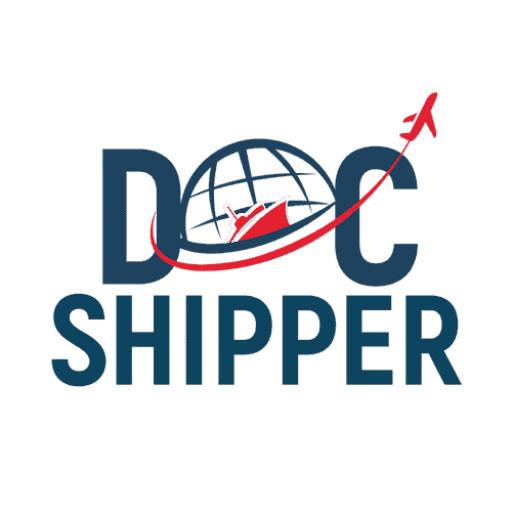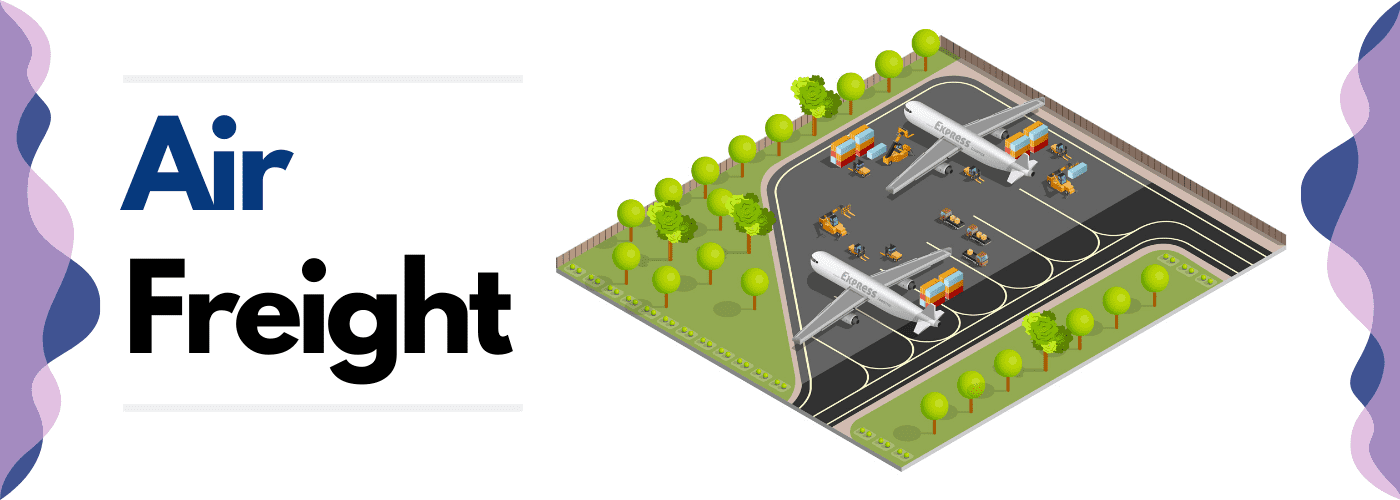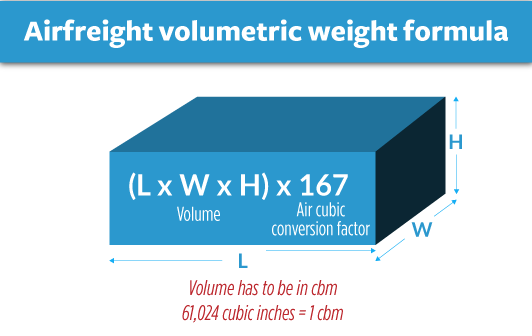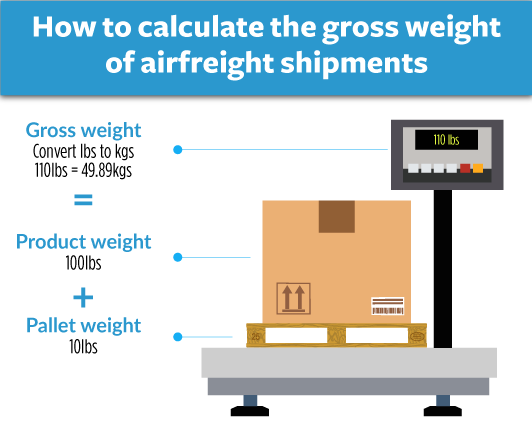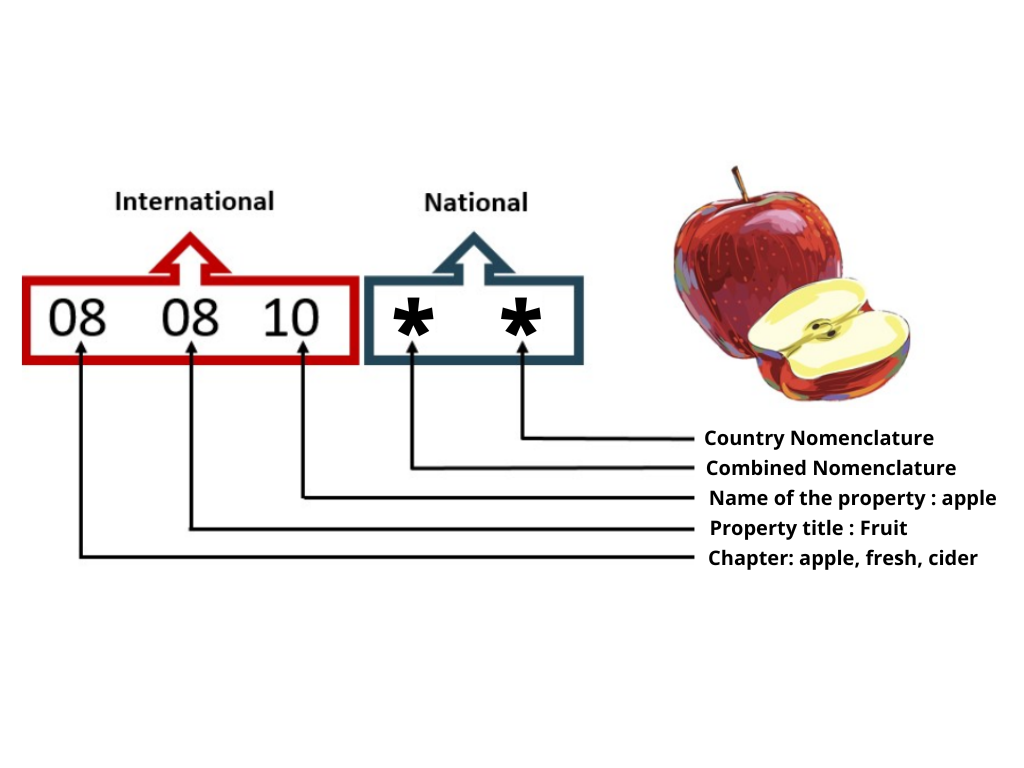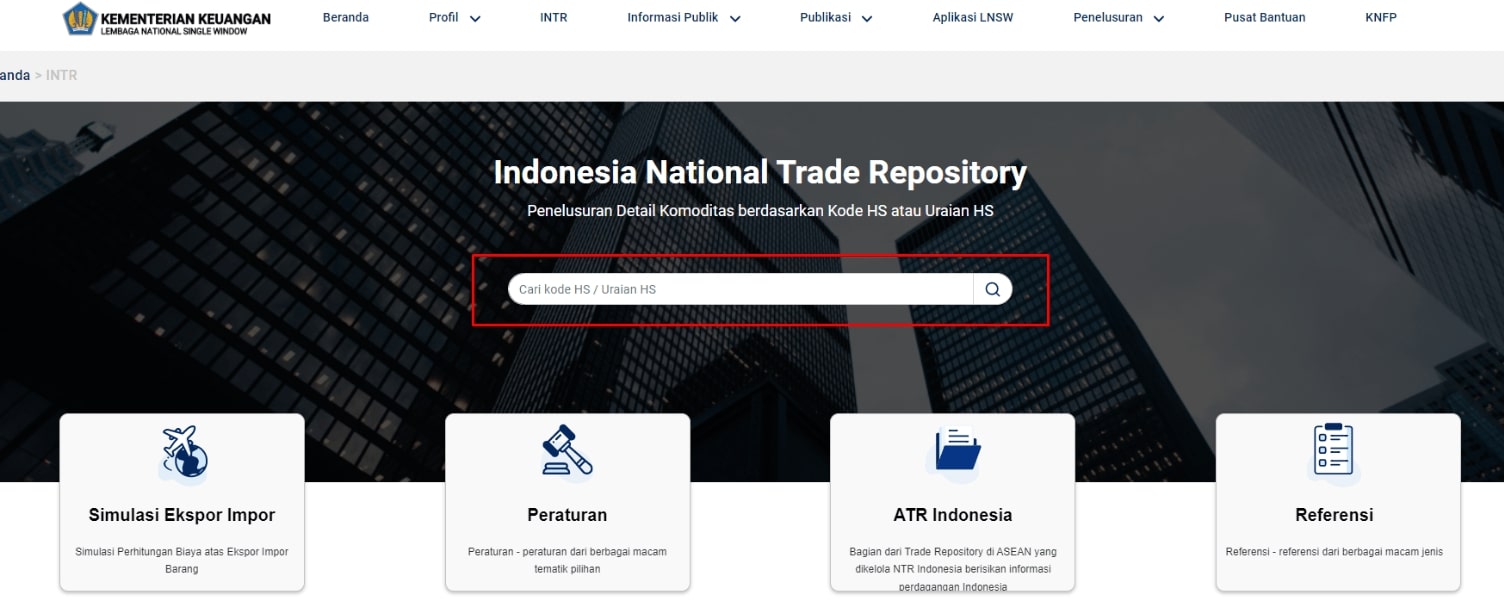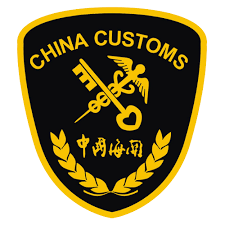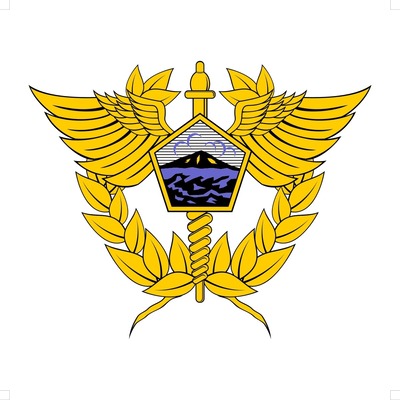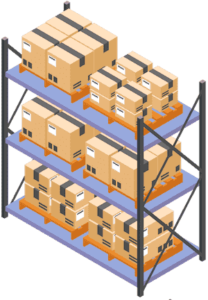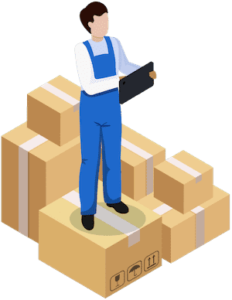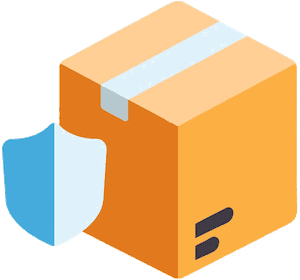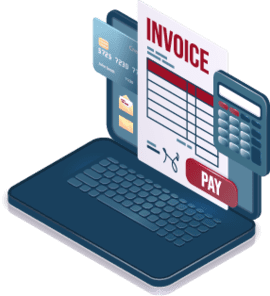Given each country's distinct criteria and regulations, navigating the import process between China and Indonesia can be difficult. We provide step-by-step information on shipping methods, rules, and considerations for importing between these two nations in this thorough guide.
Whether you are a startup, a major corporation, a small and medium-sized enterprise (SME), or an individual looking to import, our guide will provide you with the information you need to make informed decisions and effectively import items from China to Indonesia.
Trade between the two : China and Indonesia in brief
China's rising economic capability and competitive advantages, such as low-cost labor and high-quality products, have elevated the country to the status of a global economic superpower rivaling the United States. Its dominance is visible in a variety of areas where it has a strong presence, and its products are utilized by 9 out of every 10 businesses globally. China's economic success has also resulted in expanded trade partnerships with a number of countries, including Indonesia.
As a growing economy, Indonesia has established itself as one of Southeast Asia's largest. Despite obstacles such as the Asian financial crisis in 1997 and the 2004 tsunami, Indonesia has a solid economy based on exports, particularly in the automotive, food processing, and equipment sectors, as well as tourism, which generates foreign currency. As a result, commerce between China and Indonesia has been steadily increasing, with the China-ASEAN Free Commerce Agreement set to increase bilateral trade to $100 billion between 2021 and 2022.
What are the various modes of transportation available between China and Indonesia?
For delivering goods between China and Indonesia, numerous types of transportation are available. These are some examples:
- Sea Freight: One of the most prevalent forms of transit between the two countries is by sea freight. Sea freight has the advantage of being inexpensive and capable of handling big amounts of goods.
- Air Freight: While more expensive than sea freight, air freight provides faster travel times and more consistent delivery schedules, making it a popular choice for time-sensitive items.
- Road Freight: While not a common mode of transport for commodities between China and Indonesia, road freight is nonetheless employed in some situations, particularly for cross-border shipments between neighboring Chinese and Indonesian provinces.

Sea Freight from China to Indonesia
When it comes to shipping goods between countries, many businesses favor sea freight because to its low cost and capacity to convey big amounts of commodities. As the sea freight industry has grown significantly in recent years, this is especially true for businesses that import or export goods between China and Indonesia. While sea freight has many advantages, it also has some complexities, such as navigating various regulations and ensuring timely delivery of goods.
DocShipper Tips: Cargo shipping is interesting if you prioritize cost-effectiveness over delivery time for your products.
Note DocShipper : Our team of specialists would be delighted to help you with your strategy or respond to any questions you may have. All you have to do is fill out our online form to get in touch with us.
Overview - Ocean shipping from China to Indonesia
International shipping plays a crucial role in facilitating trade between China and Indonesia. Chinese ports, such as Shanghai, Ningbo, and Shenzhen, serve as major hubs for shipping goods to Indonesia, with Indonesian ports, including Tanjung Priok and Tanjung Perak, being popular destinations for Chinese cargo.
The trade volume between China and Indonesia has been steadily growing, reaching nearly $114 billion in 2021. However, challenges such as port congestion, transit delays, and tariff fluctuations pose obstacles to smooth trade operations, necessitating innovative logistics solutions.
Efforts are being made to enhance connectivity, trade facilitation, and sustainability in the shipping industry between China and Indonesia. Initiatives like the Belt and Road Initiative (BRI) and the ASEAN-China Free Trade Area (ACFTA) are being pursued to strengthen trade relations and promote economic cooperation.
What are the main shipping ports in Indonesia?
Port of Tanjung Priok (Jakarta)
Tanjung Priok Port is Indonesia's largest seaport, recognized for its remarkable accessibility for seagoing boats and strategic geographical location on Java's northwest coast. It is a large industrial port location with convenient access to Jakarta, Indonesia's capital, and the surrounding metropolitan area. In terms of throughput, the port handles millions of tons of cargo every year, accounting for more than 10% of overall port traffic in Indonesia.
Port of Tanjung Perak (Surabaya)
Tanjung Perak Port is an important seaport in Indonesia, recognized for its advantageous geographical location on Java's northern shore. It is a key industrial hub with easy access to Surabaya, Indonesia's second-largest city, and its surroundings. The port handles millions of tons of cargo each year, making it an important trade hub for the region.
Port of Belawan (Medan)
The Port of Belawan is a well-known seaport in Indonesia, recognized for its strategic location on Sumatra's northeastern coast. It is a vital trade hub for the region, with millions of tons of products passing through each year. The port is well-connected to Medan, Indonesia's third-largest city, and its adjacent industrial sectors, making it a vital hub for regional commerce and economic activities.
DocShipper Alert : Do you intend to ship products from China via sea? DocShipper handles all procedures with the various partners in the logistics chain, whether it's a groupage shipment or a whole container. DocShipper makes importing and exporting easier by providing a single point of contact, personal service, peace of mind, and knowledge. Any question? Make sure to contact us for a free quote !
Transit time between China and Indonesia
The average sea freight shipping time from China to Indonesia is between 6 and 20 days. And this will vary based on a number of things, including customs requirements and the distance between ports. In addition to other considerations.
| Tanjung Priok | Tanjung Perak | Belawan | |
| Shangaï | 12 | 10 | 12 |
| Shenzhen | 6 | 8 | 10 |
| Ningbo | 12 | 14 | 20 |
How to choose container types for China-Indonesia shipping?
There are various sorts of containers, but the three most prevalent sizes are:
- 20 ft Equivalent Unit (TEU): A standard container with dimensions of 20 feet in length, 8 feet in width, and 8.5 feet in height, with a capacity of approximately 1,172 cubic feet or 33.18 cubic meters.
- 40 ft Equivalent Unit (FEU): A standard container with dimensions of 40 feet in length, 8 feet in width, and 8.5 feet in height, commonly abbreviated as "40 ft" or "40', with a capacity of approximately 2,390 cubic feet or 67.67 cubic meters.
- 40 ft High Cube (HQ) container: Similar to the FEU container, but with an additional height of 1 foot, making it 9.5 feet in height. It has an increased capacity of approximately 2,694 cubic feet or 76.3 cubic meters.
What is the best option for shipping from China to Indonesia - FCL or LCL?
There is now two methods of transportation :
LCL: Less than Container Load
This shipping method is used in international trade to convey smaller quantities of goods that do not necessitate the use of an entire shipping container.
Multiple shipments from various carriers are merged into a single container in an LCL shipment to maximize space usage and save shipping costs. This approach is typically used to send modest volumes, as it allows you to group and fill a container with many small shipments bound for the same port of destination. It may be of interest to you if you ship in small amounts and need to consolidate numerous shipments and/or intend to deliver to multiple sites upon arrival. But also if you have a volume of merchandise between 2 m3 and 13/14 m3.
FCL: Full Container Load
FCL (Full Container Load) is a method of transportation used in international trade to transport goods that fill an entire shipping container.
When you use this shipping method, you have all the necessary space in the container for your shipment, allowing you to ship large volumes. It will also result in faster delivery. Indeed, when the container arrives at the port of destination, it is unloaded from the ship and delivered directly to the consignee, unlike the LCL (Less than Container Load), which will be unloaded and then dispatched to a deconsolidation warehouse. The container will be sealed from origin to destination, which reduces handling and thus risks and charges. Note that your container will be profitable as soon as it is half full.
Advantages of LCL
- The most cost-effective option for smaller volumes.
- Compatible with a wide range of products
- Suitable for "heavy" goods with a favorable volume-to-weight ratio.
Disadvantages of LCL
- Transit times are quite long
- Higher risk of damage or loss as goods are combined with other shipments.
Advantages of FCL
- Container sealing ensures secure transportation.
- Ideal for transporting large quantities of goods.
- Handling is minimized.
Disadvantages of FCL
- Longer transit times for less urgent shipments
- Higher costs for smaller volumes.
- Requires full container capacity, even if volume is not fully utilized.
DocShipper advice: Air freight becomes more interesting if the quantity of your items does not exceed 2 m3. In addition, the delivery by air freight will be much faster.
DocShipper advice: We advise selecting this option if your cargo volume is greater than 13/14 m3. You will still save money even if you only fill the container halfway.
Special sea freight between China and Indonesia
Reefer container
These reefer holders are intended for the transportation of perishable products or synthetic compounds that require a specified temperature. There are reefer holders of various sizes available, all of which are outfitted with the best equipment for controlling temperature and moisture levels.
OOG
Items that are OOG (Out of Gauge) surpass normal container restrictions (items such as large machinery, construction materials, wind turbine blades, boats and yachts…). They necessitate the use of specialized containers such as open-top or flat rack containers. For missed slots, shipping companies may levy an OOG cost. This form of shipping equipment reduces time and allows for the shipment of non-standard commodities.
Bulk
Bulk transportation refers to the shipment of goods in large quantities, typically carried in the hold of a ship. Bulk freight and general freight differ in their storage methods, as bulk freight involves transporting bulk solids and liquids such as coal, oil, minerals, etc. These types of vessels are commonly referred to as bulk carriers.
Ro-Ro
RoRo (Roll-on/Roll-off) transport is a mode of transportation in which wheeled goods, such as cars, trucks, semi-trailer trucks, trailers, and train cars, are loaded onto specialized vessels via ramps or platforms, allowing vehicles and machinery to be driven or dragged on and off for transit. This shipping method is well-known for its effectiveness in loading and unloading freight, making it suited for big amounts of cargo. RoRo transport is commonly utilized in international trade to carry automobiles and machinery.
DocShipper Alert : In case you require transportation of exceptionally large objects, such as a boat, feel free to get in touch with us as we have the capability to offer you a solution for any type of cargo.
How much does the ocean freight cost between China and Indonesia?
The average cost of shipping a 20-foot container (FCL) from China to Indonesia ranges from $500 to $1,500, while the cost of a 40-foot container (FCL) can range from $800 to $2,500. The cost of shipping a Less than Container Load (LCL) shipment can vary depending on the volume and weight of the cargo. Please note that these are approximate estimates, and the actual cost may vary based on the specific details of your shipment.
How is the freight cost between China and Indonesia calculated?
The weight/volume ratio, or volumetric weight, is the most used method to calculate sea freight costs between China and Indonesia. It determines the chargeable weight of a shipment, used by carriers to calculate costs.
The formula for calculating volumetric weight involves multiplying the length, width, and height of the shipment, then dividing by a volumetric weight factor. The resulting volumetric weight is compared to the actual weight, and the higher is used as the chargeable weight for shipping costs.
For example, if you have a shipment from China to Indonesia with a physical weight of 500 kg but a volume of 2 cubic meters, and the volumetric weight factor is 5000 cubic centimeters per kg, you can calculate the volumetric weight as follows:
Volumetric weight (kg) = Volume (m3) / Volumetric weight factor (m3/kg)
Volumetric weight (kg) = 2 m3 / 5000 m3/kg = 0.4 kg
In this case, the volumetric weight of 0.4 kg is higher than the actual weight of 0.5 kg. Therefore, the shipping costs would be based on the volumetric weight of 0.4 kg, as it would be considered the chargeable weight for the shipment.
Using the weight/volume ratio allows for accurate calculation of shipping costs based on space occupied, ensuring efficient utilization of cargo space and appropriate charges for larger but lighter shipments, reflecting actual space occupied in the shipping vessel.
Info DocShipper: Volumetric and gross weight
There is a difference between what is called the volumetric weight and the gross weight, the first is based on the volume and the second on the weight (on scale) of the cargo. To this, we must also retain the following proportion: 1 m3 is equal to 167 Kgs (200 kgs for expeditions in "Express"). Finally, the transporter will consider the most important value between the volumetric weight and the gross weight.
DocShipper Advice : As you can see, there are a variety of elements that influence delivery costs. Fill out our online form to speak with one of our experts right now. For more information about this kind of transportation, see our website devoted to marine freight: Sea freight
Air Freight from China to Indonesia
When it comes to shipping goods between nations quickly and efficiently, many businesses prefer air freight. This is especially true for businesses that import or export goods between China and Indonesia, as the air freight industry has grown significantly in recent years. However, while air freight has numerous advantages, it also has its share of complexities, ranging from customs regulations to documentation requirements.
What are the different types of airfreight?
There are two main types of air freight services available:
- Conventional air cargo: Utilizes space on conventional airlines (such as Air France, Air China…) and cargo carriers for larger quantities of goods. Ideal for non-time-sensitive shipments following regular airfreight schedules.
- Express air freight: Relies on courier companies like DHL, FedEx, TNT, UPS, and others for smaller shipments, typically parcels or packages. Designed for expedited delivery of time-sensitive items such as documents, perishable goods, or high-value items. Offers faster transit times, tracking, insurance, and priority handling.
DocShipper advice : If your valuable goods require urgent delivery and have a volume of less than 2 CBM, it is recommended to opt for airfreight.
DocShipper Alert : As an international freight forwarder, DocShipper specializes in arranging the transportation of your goods from the supplier's warehouse to their final destination. Our all-inclusive services cover everything from packing to customs clearance and administrative procedures, regardless of the mode of transport selected, including air freight. Contact us now to receive an estimate within 24 hours."
What are the main airports in Indonesia?
Main airports in Indonesia
Soekarno-Hatta International Airport (CGK): Situated in the capital city of Jakarta, Soekarno-Hatta International Airport processes more than 1.5 million tons of cargo each year, making it the busiest air cargo hub in Indonesia. Its advanced cargo facilities and handling capabilities serve as a crucial gateway for the transportation of goods, both domestically and internationally.
Ngurah Rai International Airport (DPS): Nestled on the picturesque island of Bali, Ngurah Rai International Airport handles over 200,000 tons of cargo annually. Its dedicated cargo facilities cater to a diverse range of goods, including perishables, textiles, and handicrafts, which are major exports from the island.
Juanda International Airport (SUB): Situated in Surabaya, Indonesia's second-largest city, Juanda International Airport handles over 150,000 tons of cargo annually. Equipped with modern cargo facilities, it expertly handles various types of goods, including textiles, automotive parts, and electronics.
Sultan Hasanuddin International Airport (UPG): Located in the bustling city of Makassar, Sultan Hasanuddin International Airport handles over 100,000 tons of cargo annually. Its dedicated cargo facilities adeptly handle a wide array of goods, including seafood, fruits, and other agricultural products that are major exports from the region.
Transit time between China and Indonesia airports
Airfreight is an effective mode of transportation for companies who need their items delivered quickly and reliably. Air freight can offer much faster transportation times than marine freight, which might take several weeks or even months to reach its destination. Shipping by air from China to Indonesia, for example, can take as little as 2 to 5 days.
How much does air freight transport between China and Indonesia cost?
The average air freight transit cost for a 100 kg shipment between China and Indonesia can range from $3 to $8 per kg, for a total shipment cost of $300 to $800. This is only an estimate; the final cost will depend on the criteria indicated as well as the exact requirements of the shipment. Air shipping costs between China and Indonesia are are normally determined based on the greater of the shipment's weight or volume. The chargeable weight is often estimated by comparing the actual weight of the cargo to the dimensional weight, which is calculated using the shipment's length, breadth, and height. If the dimensional weight is more than the actual weight, the chargeable weight, also known as volumetric weight, is calculated.
The air freight charges may also depend on other factors, such as :
- the origin and destination of the shipment
- the type of goods being shipped
- the level of service required.
- on the airline or freight forwarder used for the shipment.
For example, express air freight services that offer faster transit times and additional features such as tracking and insurance may be more expensive than standard air freight services. It is important to compare rates and services to find the best option for the specific shipment.
How do you calculate the volumetric weight of your shipment?
The volumetric weight of the package is an important component to consider when estimating the cost of air freight. This is because airlines charge for air freight depending on the larger of the actual weight or the volumetric weight. The volumetric weight is determined rather than the actual weight of the cargo.
To calculate the volumetric weight, you first need to calculate the volume of the shipment by multiplying the length, width, and height of the shipment, measured in centimeters or inches. Once you have the volume, you need to convert it to weight using the air cubic conversion factor, which is a number that varies depending on the unit of measurement used for the shipment's dimensions.
For shipments measured in cubic centimeters, the air cubic conversion factor is typically 6,000, while for shipments measured in cubic inches, the air cubic conversion factor is typically 167.
Calculating the volumetric weight is an important consideration when it comes to air freight, as it can impact the cost of the shipment. If the volumetric weight of the shipment is greater than the actual weight, the airline will charge based on the volumetric weight.
Door to door services between China and Indonesia
Door-to-door delivery between China and Indonesia is a convenient and cost-effective logistics option that allows shipments to be picked up at the origin and delivered directly to the destination. This solution eliminates the need for various intermediaries, resulting in a more smooth transit experience. The logistics provider handles all parts of the shipping, such as customs clearance, documentation, and last-mile delivery, ensuring that the cargo arrives securely and on time.
A door-to-door service means that we will pick up your item from wherever you need it and deliver it to your selected location, right to your door or stockroom. This provides complete assistance, regardless of whether you travel by sea, air, express and can make your life easier, including:
- Convenient pickup and delivery at your location
- Simplified shipping process with one point of contact
- Increased visibility and control over the shipment
- Reduced risk of damage or loss during transit
- Faster and more efficient transit times
- Customs clearance and documentation handled by logistics provider
DocShipper info : Looking for a safe and dependable door-to-door service between China and Indonesia? We will gladly assist you in locating the best comprehensive package for you. DocShipper is here to assist you from A to Z and ensure the smoothest possible shipment, with no intervention required from your side as our team will take care of everything. Please do not hesitate to contact us.
What is the customs clearance process in Indonesia for goods imported from China?
Importing goods into Indonesia can be a complex process that requires compliance with various customs regulations and requirements. One of the most critical aspects of importing goods into Indonesia is customs clearance. Customs clearance is the process of ensuring that imported goods comply with Indonesian customs regulations and requirements before they can be released into the Indonesian market.
When importing goods into Indonesia, it is important to be aware of the items that are forbidden or limited from being imported into the country.
Forbidden items
- Narcotics and drugs
- Pornographic materials
- Counterfeit products
- Hazardous waste materials
- Animal products and live animals (except for pets)
- Weapons, ammunition, and explosives
- Radioactive materials
- Toxic and hazardous substances
Limited items
- Alcohol and tobacco products (limited quantities allowed for personal use only)
- Plants and plant products (subject to plant quarantine requirements)
- Electronic products (require certification from the Indonesian Ministry of Communication and Information)
- Medical devices and pharmaceutical products (require certification from the Indonesian Ministry of Health)
- Food products (require certification from the Indonesian Ministry of Agriculture)
- Cosmetics and personal care products (require certification from the Indonesian Food and Drug Administration)
How to calculate applicable tariff with the HS code?
When importing goods into Indonesia, it is important to follow the customs procedures and regulations to ensure smooth clearance of your goods.
The first step is to determine the Harmonized System (HS) code of the product you are importing. The HS code is an internationally recognized system for classifying goods based on their nature, composition, and intended use. The HS code, together with the country of origin, will determine the applicable customs duty and tax rates.
This is how the HS code is composed :
How do I find the HS Code?
If you intend to import or export goods, you must first determine the correct HS code for your products. There are two basic methods for determining the HS code for your products.
To begin, you can check an HS code directory, which is categorized by product type or industry and is available online or in print. The second alternative is to obtain advice from a customs broker or freight forwarder, both of whom can be invaluable in international trade matters. While conducting online research or using a third-party website can be beneficial, but it can also be time-consuming and perplexing.
How to calculate the applicable tariff with HS code?
Here are the steps to find the customs duties of each product using the HS code on the Indonesian Customs and Excise Department's official website:
- Visit the official website of the Indonesian Customs and Excise Department to access information about customs duties and other applicable taxes and fees for imports. On the website, you can find the page dedicated to customs duties for each product using the HS code.
- On the HS Code Search page, enter the HS code of the product you want to search for in the search bar provided.
- Click on the "Search" button located next to the search bar.
- The page will display the HS code of the product you searched for, along with the customs duties and other applicable taxes and fees that apply to that product.
- You can also click on the "View Detail" button to see a more detailed breakdown of the customs duties and taxes for that product.
Indonesian customs
Directorate General of Customs and Excise of Indonesia (Indonesia)
Site : Indonesian customs
What documents are required for customs clearance?
The specific documentation required for customs clearance in Indonesia may differ based on the type of commodities being imported or exported, as well as the customs authority's specific criteria. However, the following are some frequent documents that may be required for customs clearance in Indonesia:
- Commercial invoice: This document provides a description of the goods being imported, as well as their value.
- Bill of lading: This is a legal document that provides evidence of the shipment of goods and includes details such as the type of goods, quantity, and destination.
- Packing list: This document provides a detailed list of the contents of each package being shipped.
- Import declaration: This is a document that declares the details of the imported goods, including their HS code, quantity, value, and country of origin.
- Certificate of origin: This document confirms the origin of the goods being imported and may be required to claim preferential treatment under a free trade agreement.
- Insurance certificate: This document provides evidence of insurance coverage for the goods being transported.
- Permits and licenses: Depending on the type of goods being imported or exported, various permits and licenses may be required, such as import permits or phytosanitary certificates.
Other logistics services
Warehousing and storage
We offer comprehensive warehousing services in China, with multiple distribution centers located in key urban areas to ensure efficient and timely delivery of your merchandise to Thailand. Our experienced team is equipped to handle complex logistics needs, including consolidation of orders from multiple suppliers or splitting of containers for later shipment. You can trust us to ensure the safe and secure storage of your goods with our advanced inventory management systems and strict security protocols.
For more information on our warehousing services, please refer to our dedicated article : Warehousing services
Packaging and repackaging
Calculating the assurance for transportation involves multiplying the premium rate by the pronounced sum. The cost of insurance can vary based on several factors, including the mode of transportation, the nature of the cargo, and the insurance company. To accurately determine the cost, it is essential to declare both the shipping charges and the value of the goods.
For further information on transportation insurance, we invite you to consult our dedicated article : Packing services
Transport insurance
The measure of assurance for transport is determined with premium rate x pronounced sum. The protection rate changes as indicated by the strategy for transportation utilized, the sort of merchandise and the insurance agency... In order to be aware of the exact amount, the supporter has to proclaim the measure of costs that is related to the transportation just as the worth of the merchandise.
Check our dedicate article : Transport insurance
Supplier management in China
We take a proactive approach to ensure seamless operations and customer satisfaction. As such, we initiate contact with your supplier well in advance to provide a comprehensive service that guarantees the quality of the products you receive. Our team is proficient in evaluating product attributes such as CE standards, product condition, and packaging, and will ensure that the products are packaged appropriately before being dispatched under our close supervision. With our commitment to exceptional service, we guarantee a hassle-free experience from start to finish. Our team, which is fluent in Mandarin, English, and French, has the necessary expertise to verify crucial details such as accurate measurement and proper HS code classification of your goods.
More information can be found on our dedicated page: Sourcing service
Shipment of personal effects
Are you in the midst of planning a relocation, or have you recently returned from a trip that has left you with a surplus of luggage to manage? Do you find yourself grappling with the complexities of packing, storage, packaging, or customs clearance? Let us alleviate the burden of packing, storage, packaging, and customs clearance for your upcoming move or unexpected return from a busy trip. We offer comprehensive solutions for transporting your belongings from China to Europe, or any other destination around the globe. Rest assured, we take ownership of the logistics and handle everything with care and attention to detail.
More informations on our dedicated page : Moving services
FAQ | Freight between China and Indonesia | Prices – Delays – Custom Clearance – Transport
What are the current trade relations between China and Indonesia?
China and Indonesia have extensive economic links, with China being the main trading partner for Indonesia. Despite the hurdles provided by the COVID-19 outbreak, bilateral commerce between China and Indonesia is expected to reach $85.4 billion in 2020. The two countries have been collaborating to expand trade and investment, with a particular emphasis on infrastructure development, energy, and technology. Furthermore, both China and Indonesia are participants of the ASEAN-China Free Trade Agreement, which has facilitated trade between the two countries.
What are the different modes of transportation available for freight shipping between China and Indonesia?
The most common modes of transportation for freight shipping between China and Indonesia are sea and air. Sea transportation is often preferred for bulky or heavy cargo, while air transportation is faster and suitable for time-sensitive or high-value goods.
How can I track the status of my shipment during transit?
Many freight forwarders provide a tracking service that allows you to monitor the status of your shipment during transit. You can also contact your freight forwarder directly for updates on your shipment's progress.
How long does it typically take to ship goods from China to Indonesia?
The shipping time can vary depending on the mode of transportation used, the specific origin and destination locations, and any customs or documentation processing required. For example, air freight can take as little as 2-5 days, while sea freight can take 7-30 days or more. It's important to work with a reliable freight forwarder who can provide you with accurate timelines based on your specific shipment.
DocShipper Advise : We help you with the entire sourcing process so don't hesitate to contact us if you have any questions!
- Having trouble finding the appropriate product? Enjoy our sourcing services, we directly find the right suppliers for you!
- You don't trust your supplier? Ask our experts to do quality control to guarantee the condition of your goods!
- Do you need help with the logistics? Our international freight department supports you with door to door services!
- You don't want to handle distribution? Our 3PL department will handle the storage, order fulfillment, and last-mile delivery!
DocShipper China | Procurement - Quality control - Logistics
Alibaba, Dhgate, made-in-china... Many know of websites to get supplies in Asia, but how many have come across a scam ?! It is very risky to pay an Asian supplier halfway around the world based only on promises! DocShipper offers you complete procurement services integrating logistics needs: purchasing, quality control, customization, licensing, transport...
Communication is important, which is why we strive to discuss in the most suitable way for you!
